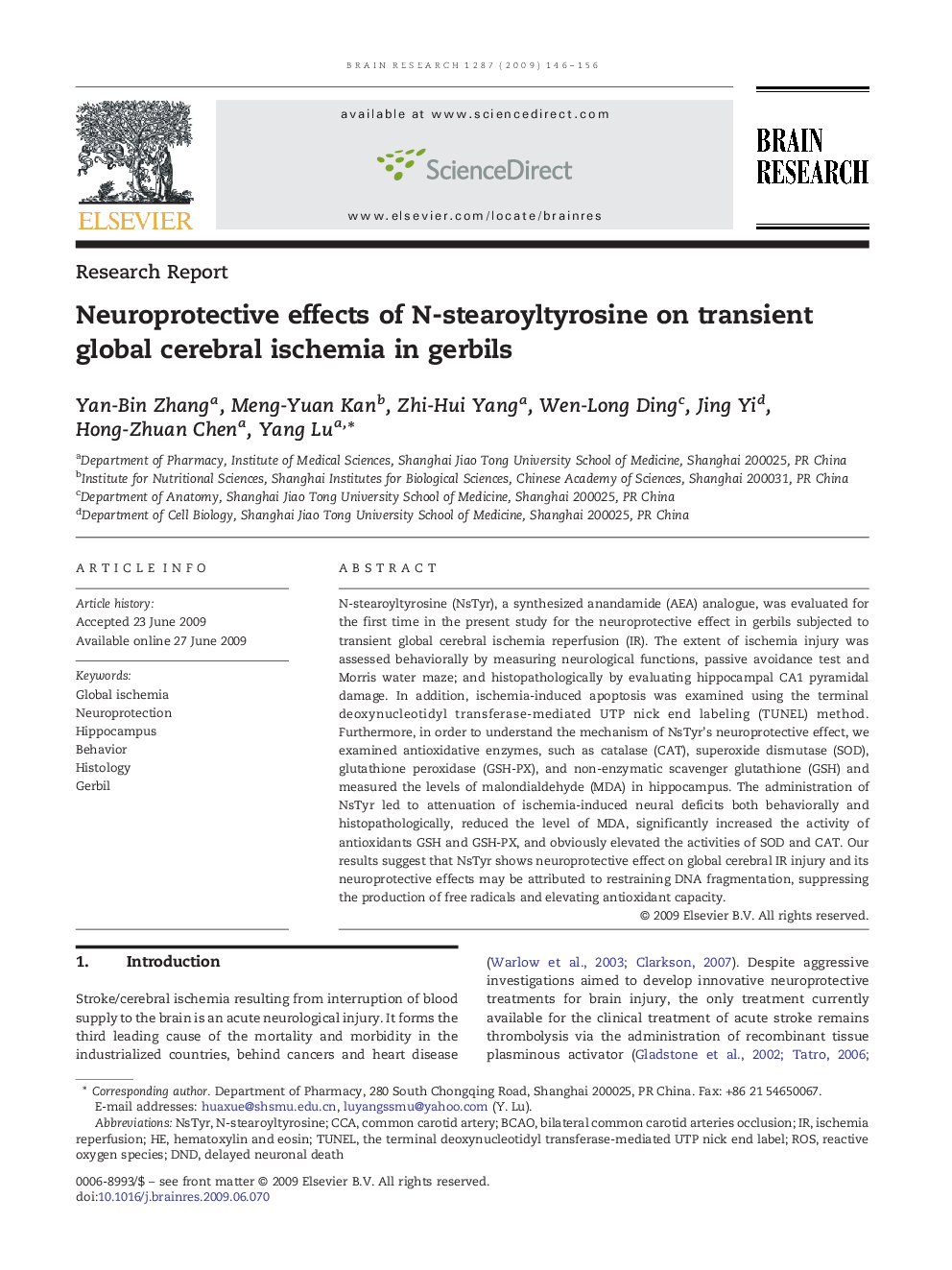| Article ID | Journal | Published Year | Pages | File Type |
|---|---|---|---|---|
| 4327995 | Brain Research | 2009 | 11 Pages |
N-stearoyltyrosine (NsTyr), a synthesized anandamide (AEA) analogue, was evaluated for the first time in the present study for the neuroprotective effect in gerbils subjected to transient global cerebral ischemia reperfusion (IR). The extent of ischemia injury was assessed behaviorally by measuring neurological functions, passive avoidance test and Morris water maze; and histopathologically by evaluating hippocampal CA1 pyramidal damage. In addition, ischemia-induced apoptosis was examined using the terminal deoxynucleotidyl transferase-mediated UTP nick end labeling (TUNEL) method. Furthermore, in order to understand the mechanism of NsTyr's neuroprotective effect, we examined antioxidative enzymes, such as catalase (CAT), superoxide dismutase (SOD), glutathione peroxidase (GSH-PX), and non-enzymatic scavenger glutathione (GSH) and measured the levels of malondialdehyde (MDA) in hippocampus. The administration of NsTyr led to attenuation of ischemia-induced neural deficits both behaviorally and histopathologically, reduced the level of MDA, significantly increased the activity of antioxidants GSH and GSH-PX, and obviously elevated the activities of SOD and CAT. Our results suggest that NsTyr shows neuroprotective effect on global cerebral IR injury and its neuroprotective effects may be attributed to restraining DNA fragmentation, suppressing the production of free radicals and elevating antioxidant capacity.
